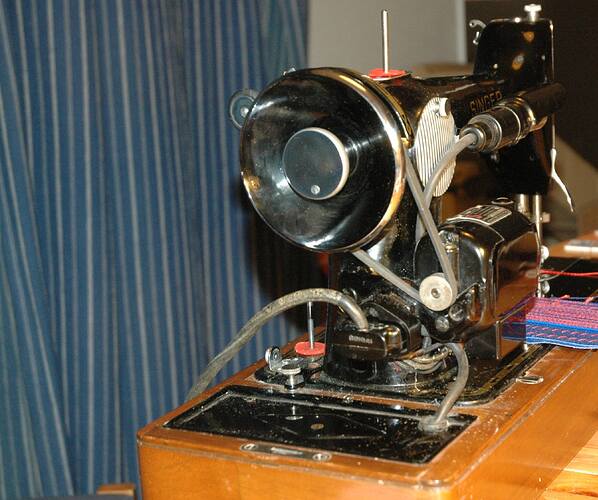This is my first post here - thank you for letting me in your community.
As a hobby, I am working on designing a small motor drive with a brushed DC motor for a few sewing machines. Sewing machines are typically driven by an electrical motor, and the speed is controlled by a foot pedal.
I find the possibilities with the new designs with BLDC motors and FOC interesting, and like to find out what the possibilities might be. I think I got a good understanding of motors in general and the physics involved. But I got a lot of questions, that I like to ask about speed range and short term torque and similar. Is it OK to ask about that here?
This is a video of an industrial sewing machine, that use a BLDC motor drive, that is typical for use on industrial sewing machines on the market today:
https://youtu.be/i552XIOQFDY
You see that the motor jump starts to a rather high lowest speed of about 60 stitches/min. In my opinion, this is not desirable. Normally sewing machines can be worse than you see here. But you do not see that full speed range and small steps. These kind of drives do use BLDC motors, but I think the software is made 20 years ago or more. Typically you will see a lowest speed of 100-500 rpm and a max speed of 4000-6000 rpm. The motor will then drive the sewing machine by a belt, with a gearing in range 1:1 up to 1:8. Max input power to drive is typically 550 W.
Then look at this video with a DIY smaller motor drive on a vintage household sewing machine, and a lot more quality information is provided:
https://youtu.be/uTB8DnyYAlA
You see very low speed. No jump start. Large range of speed. Possible small movements by kick to pedal. Good speed control for load variations at very low speed. This is quality on another level. But I think it might be possible to do something even better. The max speed is too little as presented in this video.
Actually most sewing machine users are used to very bad speed control of their sewing machines, and they have not realized, that it could be made much better.
I would like to provide more information and ask several questions. But I guess this will be a start.

